EVERYONE likes to keep up with their neighbours. Farmers are no exception. “This is a very competitive area,” says Glen Andreazza from the property he runs with wife Julie in the NSW Riverina. “I reckon we’ve all got necks like giraffes, trying to see what other farmers are doing, so we can work out if we can do it better.”
Now all eyes will be on Glen and Julie’s farm after the couple won 2018 NSW Farmer of Year. The Andreazzas have dedicated the win to their region and to the wider farming community who are surviving the difficult conditions of the drought. “It’s put our region back on the map and shows we are getting the good news story out there,” Glen says. “We are all doing it tough but hopefully this win makes people remember we are still out there doing our best.”
The NSW Riverina is a region with a rich agricultural profile. Wheat, wool, cattle, citrus, nuts, rice, cotton, chicken, grapes… anything grows in this area and, in a good year, it boasts about 17% of the total gross value of agricultural production in the state.
Glen has lived here all his life with his farming passion bred into him. He left school at 16, first working on his father Angelo’s property, then buying his first farm in Willbriggie, 19km south of Griffith, in 1991 with Julie. They currently own about 370 hectares and lease a further 265ha, mainly growing rice in summer and a wheat crop in winter.
They like to be innovators rather than followers, to work with the environment rather than fight it and jump through windows of opportunity, aware these can slam shut as quickly as they open.
RELATED ARTICLES ON INNOVATION:
-
Third generation farmers switch from sheep to cropping
-
Dairy farm thrives after deregulation
-
Clever silo storage helps grain farmer harvest top dollar
-
From fleece to farmed meat: how alpaca farmers are owning their niche
In 2006, during the previous 10-year drought, while others scrabbled to reduce their debts, Glen increased his family’s by putting in a bore. He heard zero-allocation bores were available at 11pm one night and had the process underway by 10am next morning.
“I ended up with a 700-megalitre (ML) extraction,” he says. “If I’d even come home to get paperwork co-signed by Julie, I’d have ended up with only 350ML because my neighbour was right behind me and he was doing the same thing,” he recalls. “It was a risk, but it saved half the wheat crop that year and it’s paid for itself over and over since, especially now with temporary prices of water the way they are.”
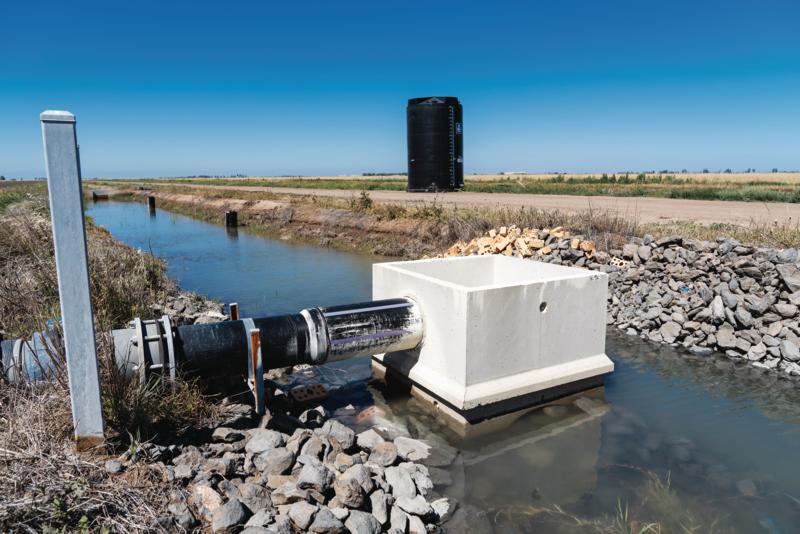 The bore installed during the last drought that now allows them to guarantee crop delivery and has paid for itself many times over.
The bore installed during the last drought that now allows them to guarantee crop delivery and has paid for itself many times over.
And Glen didn’t just buy the bore. He also used all his overdraft to convert part of his general security water to high security, paying $330/ML for the privilege. But it’s another gamble that has paid off. They now have water security for 95% of the year, compared to general security which “gives us whatever we’re going to get and this year it was 7%”.
“Putting in a bore was a risk, but it saved half the wheat crop that year and it’s paid for itself over and over since, especially now with temporary prices of water the way they are.”
This water portfolio allows Glen to guarantee crop delivery and so forward-sign contracts. He can, if he wishes, also sell a little of the water, which he did last year. That was never his original plan, the water was intended for crops, but prices were so high he decided in July to replace the property’s usual rice crop with corn.
The bore water is no good for ponding, Glen explains. “Rice needs 14ML of water per hectare. Corn needs 8-9ML. There’s a $2,000-$2,500 saving per hectare, just on the water. It didn’t make sense to grow rice.”
Everything is about numbers on the Andreazza property, especially since the couple’s accountant son Daniel joined the team. However, admits Glen, giving away the rice has had its awkward moments, not least because he’s a director of SunRice. “I just have to explain that the company makes the business decision to pay the price it does and I make the business decision to plant what’s going to make me the most money.”
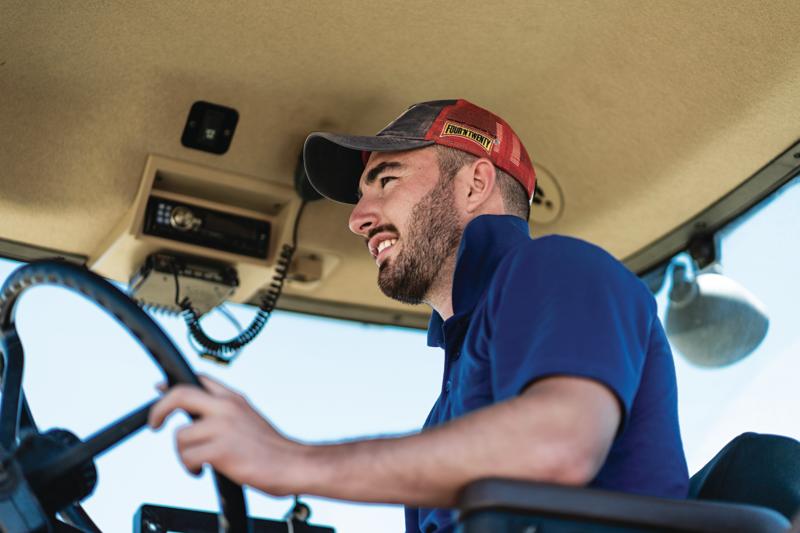 The couple’s accountant son Daniel has now joined the farm team.
The couple’s accountant son Daniel has now joined the farm team.
Although, like most rice growers, Glen and Julie were using the leftover moisture and rice stubble to grow low-protein, soft wheat in winter, they haven’t abandoned that. It’s a premium product that also returns a premium price – Glen is hoping the latest crop will hit the $500/tonne mark – and is used in biscuits such as shortbread.
“I can still grow it after corn, but we’ll have to be extra careful. We can lower the protein by watering it out and I’ve never thrown so much fertiliser at it, but it should pay dividends.”
Julie and Glen are agile farmers – switching from rice to corn is not a simple decision – and they have set themselves up to be nimble. Glen has taken advantage of the advances in land forming, for instance. “Growing rice, we used to just follow wriggly contours and the water could run wherever it ran. Now we’ve put in square terraced bays that slope down the fields so we’re going flat with a 15cm drop from bay to bay and they’re much larger. Instead of 4ha, they’re 8ha, 10ha or even nearly 20ha.”
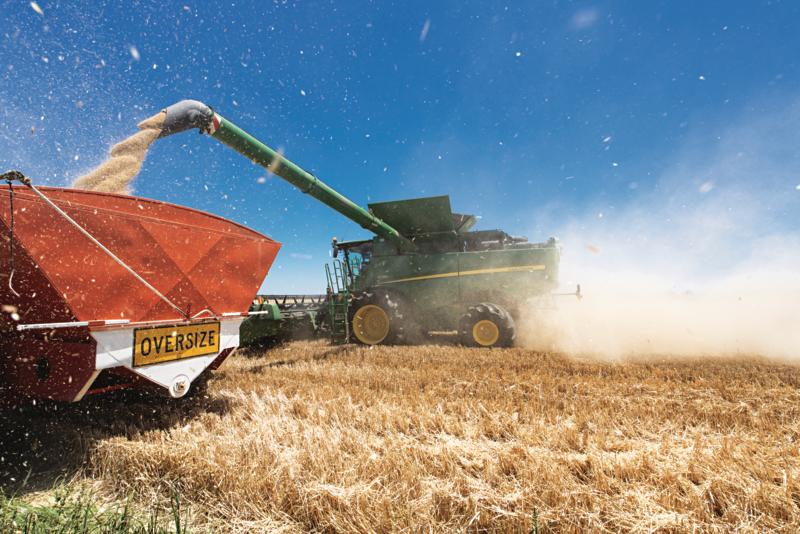 Harvesting the soft wheat crop in early December, which Glen hopes will fetch $500/tonne.
Harvesting the soft wheat crop in early December, which Glen hopes will fetch $500/tonne.
Taking out the extra contours and banks gave them an extra 10% land to farm as well as saving fuel. However, it also provided the ability to transition from a flooded rice field to putting corn into the lateral beds.
With his usual eye for opportunities, after the last land-forming contractor produced a bill for $150,000, Glen bought his own rig so he could do the job himself and experiment with different styles.
“I’m completely redoing the farm next door, converting it to a new style with drive-over roads so I can cross four different fields with equipment,” he says. “There’ll be no overlapping so we’ll save on time, work, fuel and wear and tear on machinery.”
The property’s next purchase, he hopes, will be a drone. Although it’s usually the younger generation that drags parents into the new technology future, Glen reckons in his case he has to convince Daniel. Ironically, that could be down to Julie’s influence on insisting that if the farm is to be successful, everyone needs to contribute. That means none of the kids had time for computer games.
“Daniel, now 25, was seven when he started driving the bins,” Julie says. “Teneeka – the youngest at 17 – has just done three full days on the tractor. All my kids – there’s also Laura, 23, and Brendan, 19 – have a good work ethic and an appreciation of what we’ve built as a business.”
Julie runs the farm office and drove the installation of the 9.9-kilowatt solar system, which supplies the house and sheds, but it’s Glen who usually buys the equipment, making sure he’s got the most up-to-date technology and driving it all himself to ensure it’s properly looked after.
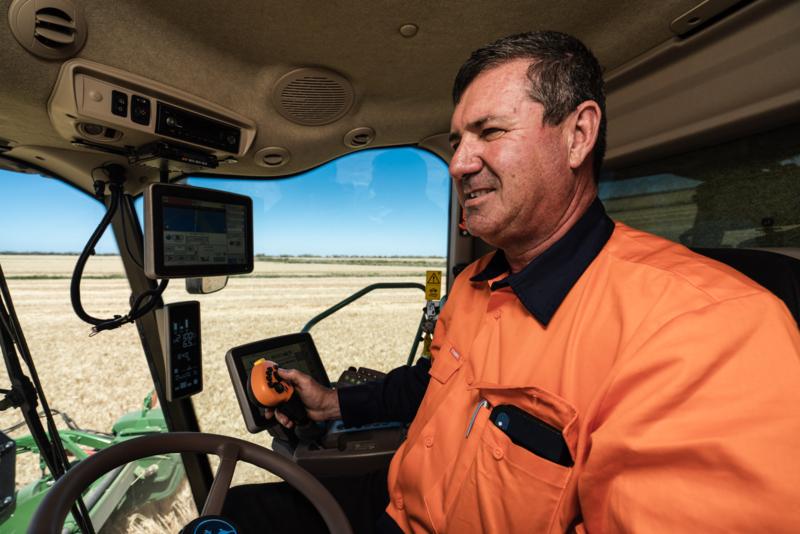 Glen makes sure he has the latest technology and drives equipment himself to ensure it’s properly looked after.
Glen makes sure he has the latest technology and drives equipment himself to ensure it’s properly looked after.
“We can cover the whole farm with a drone in a couple of hours,” he enthuses, already impressed by their agronomist using drones to take NDVI (normalised difference vegetation index) images of his rice, allowing easy identification of anything from a need for fertiliser or water to a pest infestation.
“We used to use satellites, but they’re unreliable, especially on cloudy days, and aircraft are expensive and, again, can’t fly in bad weather. In addition, the time the air surveillance is most needed is Christmas when images can’t be processed. With the drone we can do everything in-house. It’s all about having control and therefore better outcomes.”
It’s all part of Glen’s passion for precision agriculture, which allows him to reduce waste, improve production and care for the environment. Using section control when applying fertiliser, for instance, he can create a boundary and the spreader will turn on when it goes inside that boundary and turn off when it goes outside.
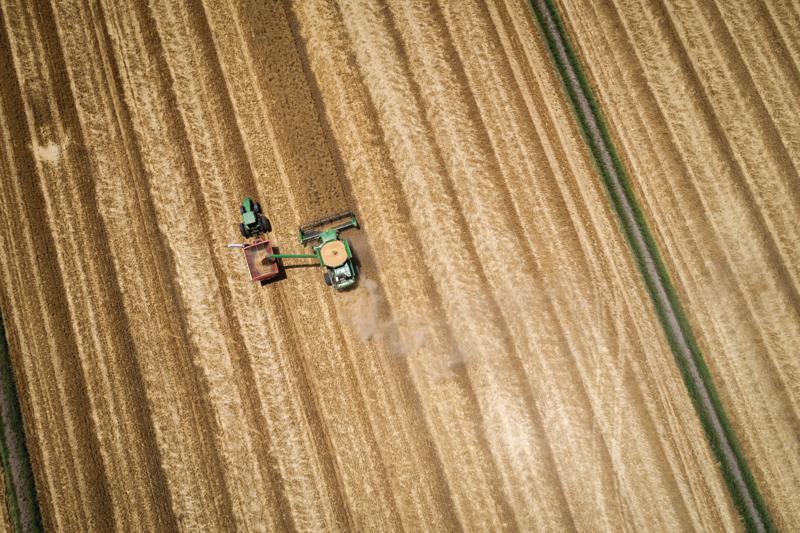 An aerial view of the wheat harvest.
An aerial view of the wheat harvest.
“If you go over a piece already fertilised, it will switch itself off. It can save me 2% on fertiliser costs and I can fertilise at night as well when the air is more still to reduce spray drift. I can work outside hours and it takes the fatigue out of it when you’re not concentrating all the time.”
Fertiliser costs are further reduced with prescription field maps. “Say I want 250kg a hectare there and 400kg on another spot, the spreader will adjust itself as we drive across the paddock. We use a combination of experience, soil tests and agronomists’ advice and always try to push the boundaries to get the highest yields. We work out why some areas might have a problem, whether it’s fertiliser, pest infestation or something else, ground-proof it and fix it for next year.”
Glen’s father, Angelo, is less enamoured of new technology. Initially, the pair farmed in partnership, but it was one of the reasons Glen decided to split the business in the early 2000s and he and Julie went out on their own with their four young children.
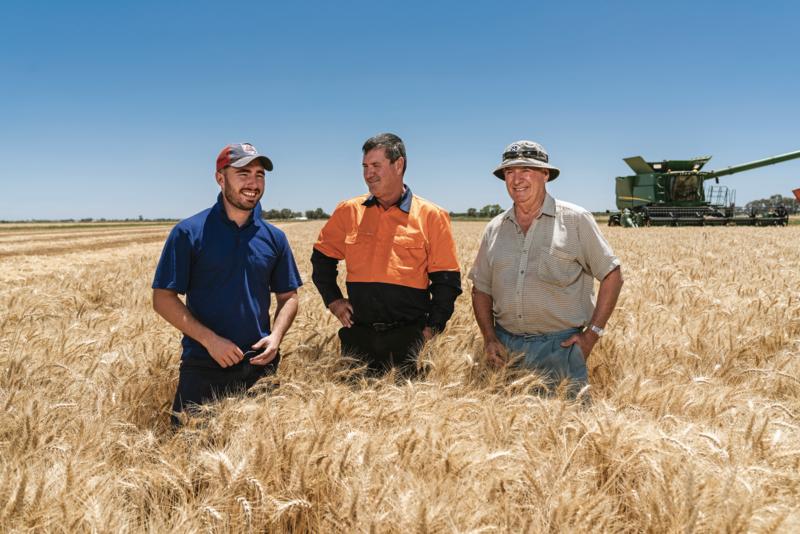 Glen stands in the centre between his son Daniel and father Angelo.
Glen stands in the centre between his son Daniel and father Angelo.
“If Dad knew the money I spent, he’d keel over, but that’s why I wanted to do my own thing,” Glen says. “It was a hard decision. It’s nice to have the backing of your parents and it meant I only had Julie to bounce ideas off, but you have to do what you’re happy with to keep moving forward.”
EXPANDING THEIR AGRICULTURAL KNOWLEDGE
As well as new technology, Glen is eager to stay on top of developments in plant breeding. He’s had a team from Longreach doing trials of soft wheats on the property for the past 10 years and the family have hosted delegates from Arnott’s and Allied Mills.
“It gives me an understanding of what they need and them an understanding of what we do to get there,” he says. “They understand what it costs us to grow a tonne of wheat for them and how a pest can wipe out the whole year.”
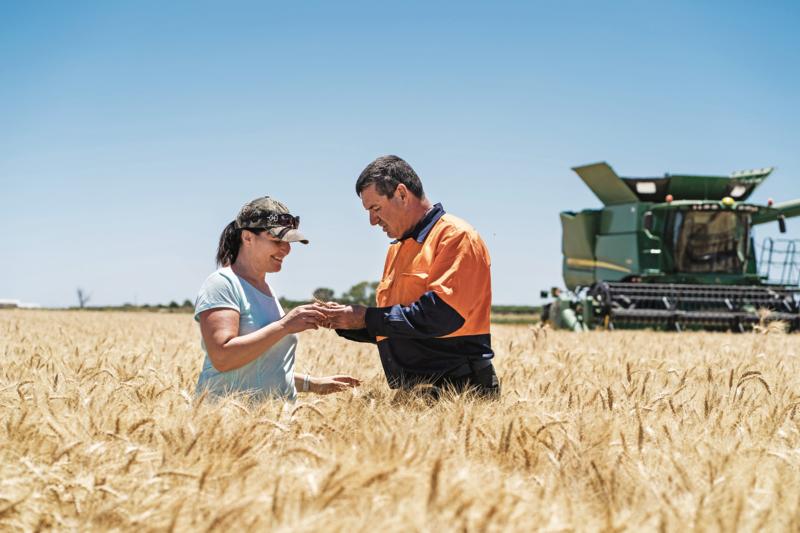 Julie and Glen inspecting their wheat.
Julie and Glen inspecting their wheat.
So what’s the next step? Glen says they want to resume growing rice. He’s done it all his life. However, with water becoming such an issue, he’s not confident and he can see it being a deciding factor in the way his kids run the farm. “We’ll always be producing, though,” Glen insists.
“This farm is set up to produce anything. We’ve swung from rice to corn. Next season I might put in cotton. We can grow what we want on the spur of the moment.”
Even local markets are good. With the Baiada premium poultry business up the road, for instance, he knows there’s a market for his corn, whether in breakfast cereal or chicken feed.
“We just throw around ideas with the agronomist and see what excites us the most.”